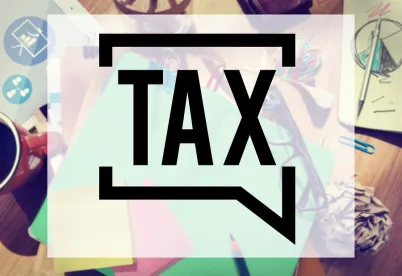On April 23, 2020, the IRS and the Treasury Department released Proposed Regulations that provide guidance for how tax-exempt organizations (“EOs”) conducting multiple unrelated trades or businesses can calculate their unrelated business taxable income (“UBTI”) in light of the enactment of Section 512(a)(6)1 under the Tax Cuts and Jobs Act of 2017.
Background
Prior to Section 512(a)(6)’s enactment, an EO that regularly carried on multiple unrelated trades or businesses was permitted to aggregate all of its income and losses arising from those activities. For example, if an EO operated a profitable restaurant and also operated a gift shop that operated at a loss, the EO was permitted to offset the restaurant’s income by the gift shop’s losses.
Section 512(a)(6) changed this result by providing that an EO’s UBTI must be computed separately with respect to each unrelated trade or business – i.e., unrelated trades and businesses must be “siloed.” Thus, under the example above, the EO would no longer be permitted to aggregate the restaurant’s income with the gift shop’s losses.
Section 512(a)(6)’s enactment was heavily criticized as bad policy and also for its lack of clarity. Specifically, neither the statute nor the legislative history provides explicit criteria for determining whether an EO has more than one unrelated trade or business or how to identify “separate” unrelated trades or businesses for purposes of calculating UBTI in accordance with Section 512(a)(6).
In 2018, the IRS and the Treasury Department released Notice 2018-67 that set forth interim guidance regarding Section 512(a)(6) and certain transition rules. Of particular note, Notice 2018-67 stated that, pending issuance of proposed regulations, EOs may rely on a reasonable, good-faith interpretation of Sections 511 through 514, considering all the facts and circumstances, when determining whether an exempt organization has more than one unrelated trade or business for purposes of Section 512(a)(6).
In that regard, Notice 2018-67 stated that the IRS would consider the use of the six-digit codes under the North American Industry Classification System (“NAICS”) as a reasonable, good-faith method. Commenters to Notice 2018-67 objected to the use of the six-digit NAICS codes due to its significant administrative burden. In particular, an EO would have to determine which of the over 1,000 available six-digit NAICS codes (if any) most accurately describes its trade or business.
The Proposed Regulations
The Proposed Regulations alleviate some (but certainly not all) of the administrative burden resulting from the enactment of Section 512(a)(6), as supplemented by Notice 2018-67. The following items, among others, are addressed in the Proposed Regulations:
- EOs are permitted to group unrelated trades and businesses together based upon the applicable first two digits of the NAICS code, which generally represent 20 sectors of economic activity. While it may still be a challenge to determine which of the 20 two-digit NAICS codes should apply, the task will be far less burdensome than having to choose among the 1,000 six-digit codes in accordance with Notice 2018-67. In addition, the Proposed Regulations likely will enable EOs to group more trades or businesses in a single silo than they could have under Notice 2018-67.
- Investment activities of most EOs can be treated as one separate unrelated trade or business if they fit within the following categories (i) qualifying partnership interests (defined in the Proposed Regulations as partnerships that meet either a de minimis or control test), (ii) debt-financed properties, or (iii) qualifying S corporation interests. However, income from certain controlled entities and controlled foreign corporations will continue to be treated as a separate unrelated trade or business and, therefore, not included as investment activities.
- Income from controlled foreign corporation insurance activities under Section 512(b)(17) is treated as a single trade or business, but cannot be aggregated with other directly conducted commercial insurance activities.
- Guidance with respect to net operating losses, although certain questions remain (particularly as a result of the CARES Act).
- Clarification as to how Section 512(a)(6) applies to an EO’s calculation of the public support test under Section 509(a)(1) and/or Section 509(a)(2).
- Subpart F income and global intangible low-taxed income (i.e., GILTI) are treated in the same manner as a dividend under the unrelated business income rules (i.e., typically not included in UBTI).
- Limited guidance with respect to the allocation of expenses, although questions remain and the Proposed Regulations state that the IRS will issue further guidance.
The Proposed Regulations are effective for the first taxable year following the date on which final regulations are published in the Federal Register. Prior to that date, EOs can rely on (i) the Proposed Regulations in their entirety, (ii) the provisions of Notice 2018-67 for purposes of aggregating or identifying separate trades or businesses, or (iii) a reasonable, good faith interpretation of Section 511 through 514, considering all the facts and circumstances, when identifying separated unrelated trades or business under Section 512(a)(6).
Only Congress can completely undo the damage done by the enactment of Section 512(a)(6) – by repealing it in its entirety. Thus, while the Proposed Regulations could be described as “taxpayer friendly” in many respects, they remind us of the quote from Ben Affleck’s character in the movie Argo when divulging his plan to sneak the Americans out of Iran – “There are only bad options. It’s about finding the best one.”
1 All references to “Section” are to the applicable section of the Internal Revenue Code of 1986, as amended.




 />i
/>i